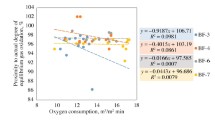Abstract
The study has been conducted on waste heat recovery (WHR) field in a continuous casting process at an integrated steel mill. The goal was to analyze an innovative heat recovery solution to accomplish energy efficiency opportunities, increase the sustainability, synergies with other industrial continuous operations, and protect the environment, as well as save costs. A real-world application for heat recovery from solids using WHR after oxygen cutting machines of slabs in continuous casting process has been proposed. To study new ways to reduce energy use and emissions, a numerical simulation software was used. The solution proposed has two main items: first, waste heat is covered by a steel thermal shield, and second, is a progressive absorption of waste heat by the water flow in pipeline zone, which is placed inside of the thermal shield. With the expected design and optimized solution, a maximum difference in temperature between inlet and outlet water (∆T w) of 90 °C and a system performance (ε) around 77 % could be obtained within operation constraints.










Similar content being viewed by others
References
Álvarez E, Gutiérrez AJ, Suárez JM, Xiberta J (2012) Steel mil slags energy potential: the case of the steel factory of Arcelor-Mittal in Asturias (Spain). Clean Technol Environ Policy 14:869–877. doi:10.1007/s10098-012-0455-8
ArcelorMittal (2009). Investor presentations www.arcelormittal.com/corp/~/media/Files/A/ArcelorMittal/investors/presentations/investor-days/2009/627-27-1-0-ArcelorMittalAsturias_200903.pdf. Last Accessed 21 Feb 2014
EERE (2007) U.S. energy requirements for aluminum production. Historical perspective, theoretical limits and current practices. DOE, Washington
Fernández JM; Santolaria C; Rodríguez-Somoano J, & Alvarez M (2009). Multiphase modelling of the steel grade transition in a continuous casting tundish. Proceedings of ASME Fluids Engineering Summer Meeting, vol 1pp 2183–2194
Fluent (2006) Inc. User’s guide. 10 Cavendish Court, Lebanon, NH03766. New England
Guo ZC, Fu ZX (2009) Current situation of energy consumption and measures taken for energy saving in the iron and steel industry in China. Energy 35:4356–4360. doi:10.1016/j.energy.2009.04.008
Hayashi D, Krey M (2007) Assessment of clean development mechanism potential of large-scale energy efficiency measures in heavy industries. Energy 32:1917–1931. doi:10.1016/j.energy.2007.03.003
IEA (2007) Tracking industrial energy efficiency and CO2 emissions. IEA, Paris
IEA (2008) Energy technology perspectives—scenarios and strategies to 2050. IEA, Paris
ITP (2004) Energy use, loss, opportunities, analysis: U.S. manufacturing & mining. Washington, DOE
ITP (2006) Engineering scoping study of thermoelectric generator packages for industrial waste heat recovery. Washington, DOE
ITP (2008) Waste heat recovery. Technologies and opportunities in U.S. industry. DOE, Washington
Li C, Thomas BG (2002) Maximum casting speed continuous cast steel billets based on sub-mold bulging computation. 85th Steelmaking Conference. Proc., ISS, Warrendale, PA, (held in Nashville, TN, 10–13 March 2002, pp 109–130
Mansouri N, Mirhosseini A, Saboonchi A (2012) Thermal modeling of strip across the transfer table in the hot rolling process. Appl Therm Eng 38:91–104. doi:10.1016/j.applthermaleng.2011.12.049
Nobari AH, Serajzadeh S (2011) Modeling of heat transfer during controlled cooling in hot rod rolling of carbon steels. Appl Therm Eng 31:487–492. doi:10.1016/j.applthermaleng.2010.10.003
Shamsi MRRI, Ajmani SK (2010) Analysis of mould, spray and radiation zones of continuous billet caster by three-dimensional mathematical model based on a turbulent fluid flow. Steel Res Int 81:132–141. doi:10.1002/srin.200900103
Suebsomran A, Butdee S (2013) Cooling process on a run-out table by the simulation method. Case Stud Therm Eng. doi:10.1016/j.csite.2013.07.002
Tarrés J, Maas S, Scholzen F, Zürbes A (2014) Simulated and experimental results on heat recovery from hot steel beams in a cooling bed applying modified solar absorbers. J Clean Prod 68:261–271. doi:10.1016/j.jclepro.2014.01.020
Viklund SB, Johansson MT (2014) Technologies for utilization of industrial excess heat: Potentials for energy recovery and CO2 emission reduction. Energy Convers Manag 77:369–379. doi:10.1016/j.enconman.2013.09.052
Villar A, Arribas JJ, Parrondo J (2012) Waste-to-energy technologies in continuous process industries. Clean Technol Environ Policy 14:29–39. doi:10.1007/s10098-011-0385-x
Villar A, Parrondo J, Arribas JJ (2013) District heating from industrial surplus heat in Avilés (Spain). Environ Prog Sustain Energy. doi:10.1002/ep.11883
Warzecha M (2011) Numerical and physical modelling of steel flow in a one-strand continuous casting tundish. Metallurgija 50:147–150
Wordlsteel (2013) Steel turns energy reduction from pipe dream to reality. www.worldsteel.org/media-centre/Steel-news/Steel-reducing-energy-use.html. Last accessed 26 Feb 2014
Worrell E, Price L, Martin N (2001) Energy efficiency and carbon dioxide emissions reduction opportunities in the US iron and steel sector. Energy 26:513–536. doi:10.1016/S0360-5442(01)00017-2
Xu C, D-q Cang (2010) A brief overview of low CO2 emission technologies for iron and steel making. J Iron Steel Res Int 17:1–7. doi:10.1016/S1006-706X(10)60064-7
Zhang J, Wang G (2007) Energy saving technologies and productive efficiency in the Chinese iron and steel sector. Energy 33:525–537. doi:10.1016/j.energy.2007.11.002
Zhang X, Zhou S (2009) The prospect of sensible heat recovery of blast furnace slag. The 7th China Iron and steel annual meeting proceedings
Author information
Authors and Affiliations
Corresponding author
Rights and permissions
About this article
Cite this article
Villar, A., Parrondo, J. & Arribas, J.J. Waste heat recovery technology in continuous casting process. Clean Techn Environ Policy 17, 555–562 (2015). https://doi.org/10.1007/s10098-014-0801-0
Received:
Accepted:
Published:
Issue Date:
DOI: https://doi.org/10.1007/s10098-014-0801-0




